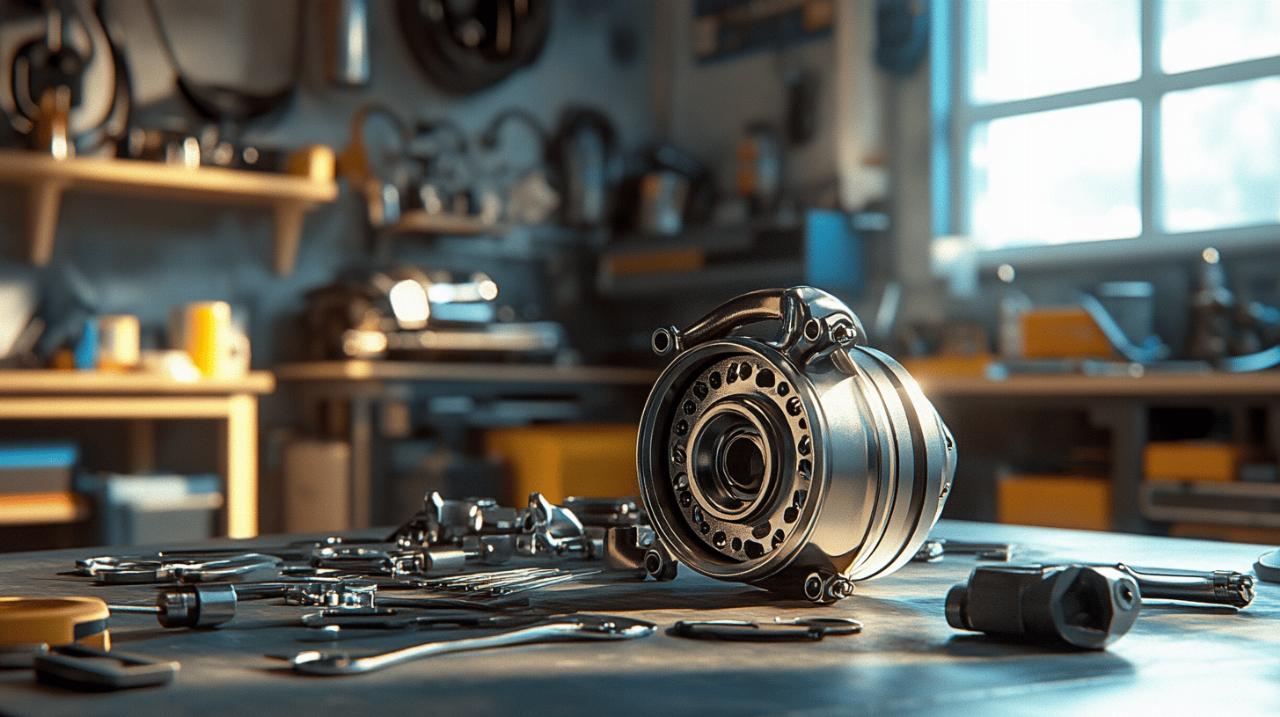Maintaining your turbocharger is essential for ensuring optimal engine performance and longevity. As vehicles become more sophisticated, proper care of components like turbochargers becomes increasingly important for both everyday drivers and enthusiasts alike. A well-maintained turbocharger not only enhances your driving experience but also prevents costly repairs down the line. This comprehensive guide will walk you through essential maintenance practices to keep your turbo running smoothly and prevent those concerning whistling noises that often signal trouble.
Understanding turbocharger maintenance fundamentals
Turbochargers significantly boost engine performance and fuel efficiency by forcing more air into the combustion chamber. As highlighted by auto-service-gall.de experts, these precision components operate under extreme conditions, spinning at speeds exceeding 150,000 RPM and enduring temperatures that can reach over 900°C. These demanding operating conditions make regular maintenance not just recommended but absolutely essential for turbocharger longevity.
Why proper lubrication is crucial for turbocharger health
The lifeblood of any turbocharger is its lubrication system. The bearings within the turbo housing rely completely on a consistent flow of clean oil to function properly and avoid premature wear. Without adequate lubrication, the extreme heat and friction generated by the rapidly spinning turbine can cause catastrophic damage within seconds. Even momentary oil starvation can lead to bearing failure, shaft wear, and eventual turbocharger replacement.
The role of regular servicing in extending turbocharger lifespan
Regular servicing plays a vital role in maximising the service life of your turbocharger. Professional inspections can identify early signs of wear or damage before they escalate into major issues. During these services, technicians check for oil leaks, inspect the condition of seals and gaskets, and assess the overall health of the turbo system. Most manufacturers recommend turbocharger inspections every 30,000 miles, though this can vary based on driving conditions and vehicle usage patterns.
Essential oil management practices
The quality and condition of your engine oil directly impact turbocharger performance and durability. Proper oil management is perhaps the single most important factor in preventing turbocharger failure.
Selecting the right high-quality lubricant for your turbocharger
Not all engine oils are created equal when it comes to turbocharger protection. Modern turbocharged engines require oils specifically formulated to withstand high temperatures and provide excellent thermal stability. Synthetic oils typically offer superior performance for turbocharged engines due to their enhanced resistance to breakdown under extreme heat. Always consult your vehicle handbook for the manufacturer-recommended oil specification, as using an incorrect grade can void warranties and cause premature wear.
Optimal oil change intervals to maintain turbocharger performance
Adhering to recommended oil change intervals is crucial for turbocharger health. Over time, engine oil degrades and becomes contaminated with particulates that can damage sensitive turbo components. For turbocharged vehicles, changing oil more frequently than the standard recommendation may provide additional protection, especially if the vehicle is regularly subjected to hard driving or stop-start traffic conditions. Many turbo specialists suggest oil changes every 5,000 miles rather than stretching to the maximum intervals suggested by some manufacturers.
Proper driving habits to protect your turbocharger
How you drive your turbocharged vehicle significantly impacts the longevity of the turbocharger. Adopting turbo-friendly driving habits can prevent unnecessary stress on these precision components.
Warming up procedures before aggressive driving
One of the most damaging practices for turbochargers is demanding full performance before the engine reaches operating temperature. Cold oil flows slower and provides less effective lubrication, particularly to the turbocharger bearings. Allow your engine to idle for at least 30 seconds after starting, then drive moderately for the first few minutes until normal operating temperature is reached. This gives the oil time to warm up and flow properly through the entire engine and turbocharger system.
Cool-down techniques after strenuous journeys
Equally important is allowing your turbocharger to cool down after hard driving. The turbo can reach extremely high temperatures during operation, and immediately shutting off the engine traps this heat within the unit. This can cause oil coking, where oil bakes onto internal components, reducing clearances and causing premature wear. Ideally, allow your engine to idle for about a minute after a demanding drive, giving the turbocharger time to slow down and cool before turning off the engine.
Air Filtration and Its Impact on Turbocharger Longevity
Clean air is essential for turbocharger health, making proper air filtration a key aspect of maintenance. Foreign particles can cause significant damage to the precision-balanced components inside your turbo.
Signs your air filter needs replacement
A clogged or dirty air filter restricts airflow to the turbocharger and engine, potentially causing reduced power, increased fuel consumption, and uneven turbo operation. Visual inspection can reveal excessive dirt accumulation, while a drop in performance or unusual noises might indicate filtration issues. Generally, air filters should be replaced every 15,000 to 30,000 miles, though dusty environments may necessitate more frequent changes.
How clean air flow prevents turbocharger damage
Even tiny particles entering the turbocharger can cause imbalance or damage to the compressor wheel, which spins at extremely high speeds. This damage creates a cascade effect, potentially leading to bearing wear and eventual turbocharger failure. A quality air filter effectively traps these particles before they can enter the system. Some performance enthusiasts opt for high-flow filters, but these should still provide adequate filtration to protect the turbocharger from contaminants.
Inspecting and maintaining turbocharger components
Regular visual inspections can help identify potential issues before they develop into serious problems. Checking the various components connected to your turbocharger should be part of your routine maintenance.
Identifying leaks and damage in hoses and connections
The network of hoses and pipes connected to your turbocharger operates under high pressure and temperature, making them susceptible to wear and leakage. Regularly inspect these components for signs of oil seepage, cracks, or loose connections. Pay particular attention to the intercooler hoses, oil feed and return lines, and vacuum lines connected to the wastegate actuator. Any leaks in these areas can affect turbocharger performance and potentially cause damage.
Preventative measures for common turbocharger wear points
Certain areas of the turbocharger system are more prone to wear than others. The oil feed and return lines are critical components that should be kept clear and free from restrictions. The wastegate mechanism, which controls boost pressure, can become stuck due to carbon buildup, potentially leading to overboosting and engine damage. Regular checks of these components, along with cleaning or replacement when necessary, can prevent more serious issues from developing.
Diagnosing whistling noises and other warning signs
Unusual sounds from your turbocharger often provide early warning of developing problems. Learning to recognise these signals can help you address issues before they become serious.
Common causes of turbocharger whistling sounds
While turbochargers naturally produce some noise during operation, certain sounds warrant investigation. A pronounced whistling noise often indicates a boost leak somewhere in the system, where pressurised air is escaping through a crack or loose connection. More serious causes include worn turbocharger bearings, damaged compressor or turbine wheels, or issues with the wastegate. Each type of whistling has distinctive characteristics that can help diagnose the specific problem.
When to seek professional assessment for unusual noises
Any change in the sound your turbocharger makes should be taken seriously. If you notice new or unusual whistling, particularly if accompanied by reduced performance, blue smoke from the exhaust, or increased oil consumption, seek professional assessment promptly. Continuing to drive with a failing turbocharger can lead to more extensive damage, including potential engine damage if fragments from a damaged turbo enter the combustion chamber.
Professional maintenance schedules and best practices
While some maintenance can be performed by knowledgeable owners, professional servicing remains essential for comprehensive turbocharger care.
Working with qualified mechanics for turbocharger servicing
Finding a mechanic with specific experience in turbocharged vehicles is important for proper maintenance. Specialists like those at Essex Turbos or Toowoomba Superior Turbos have the expertise and equipment to properly diagnose and address turbocharger issues. When selecting a service provider, look for those who specialise in your vehicle make or in turbocharger systems specifically, as they will be familiar with common issues and best maintenance practices.
What to expect during a comprehensive turbocharger inspection
A thorough turbocharger inspection involves several steps beyond visual checks. Professionals will test boost pressure, examine the turbo for shaft play indicating bearing wear, check for oil leaks around seals, and inspect the compressor and turbine wheels for damage. They may also use diagnostic equipment to monitor turbocharger performance under load conditions. Regular professional inspections, typically recommended every 30,000 to 50,000 miles, can identify potential issues before they lead to turbocharger failure and costly repairs.








